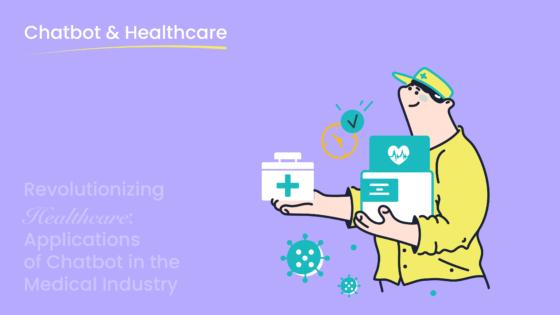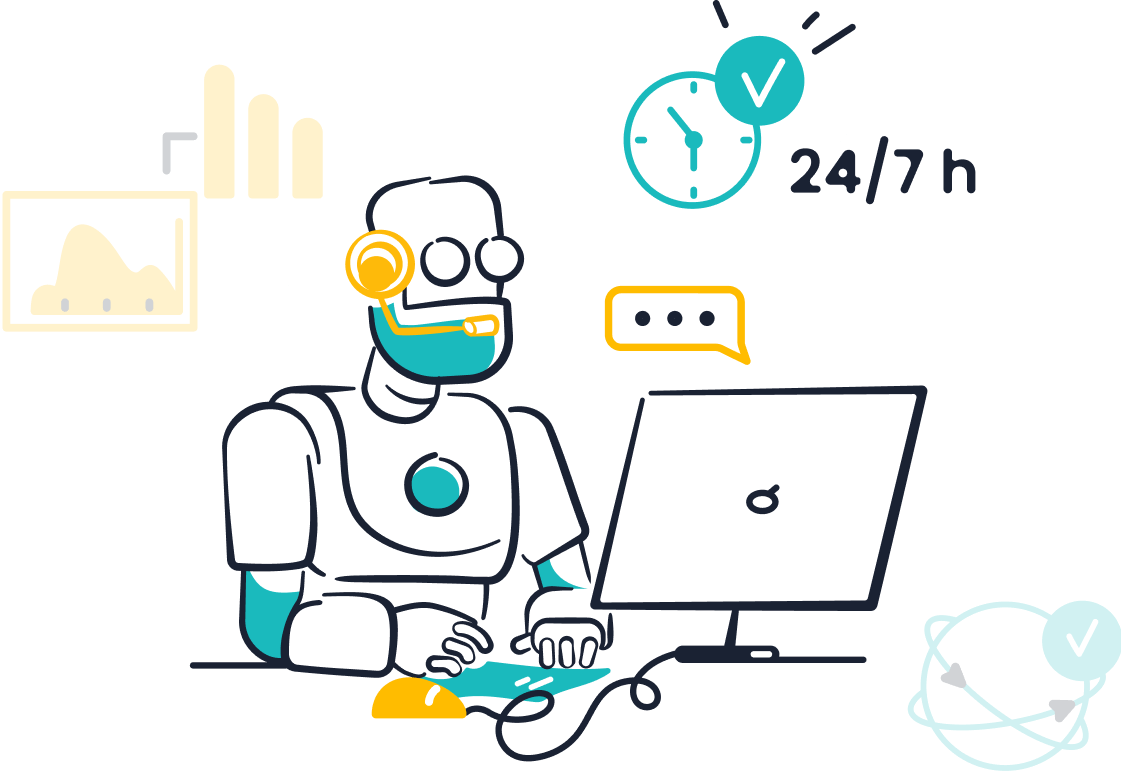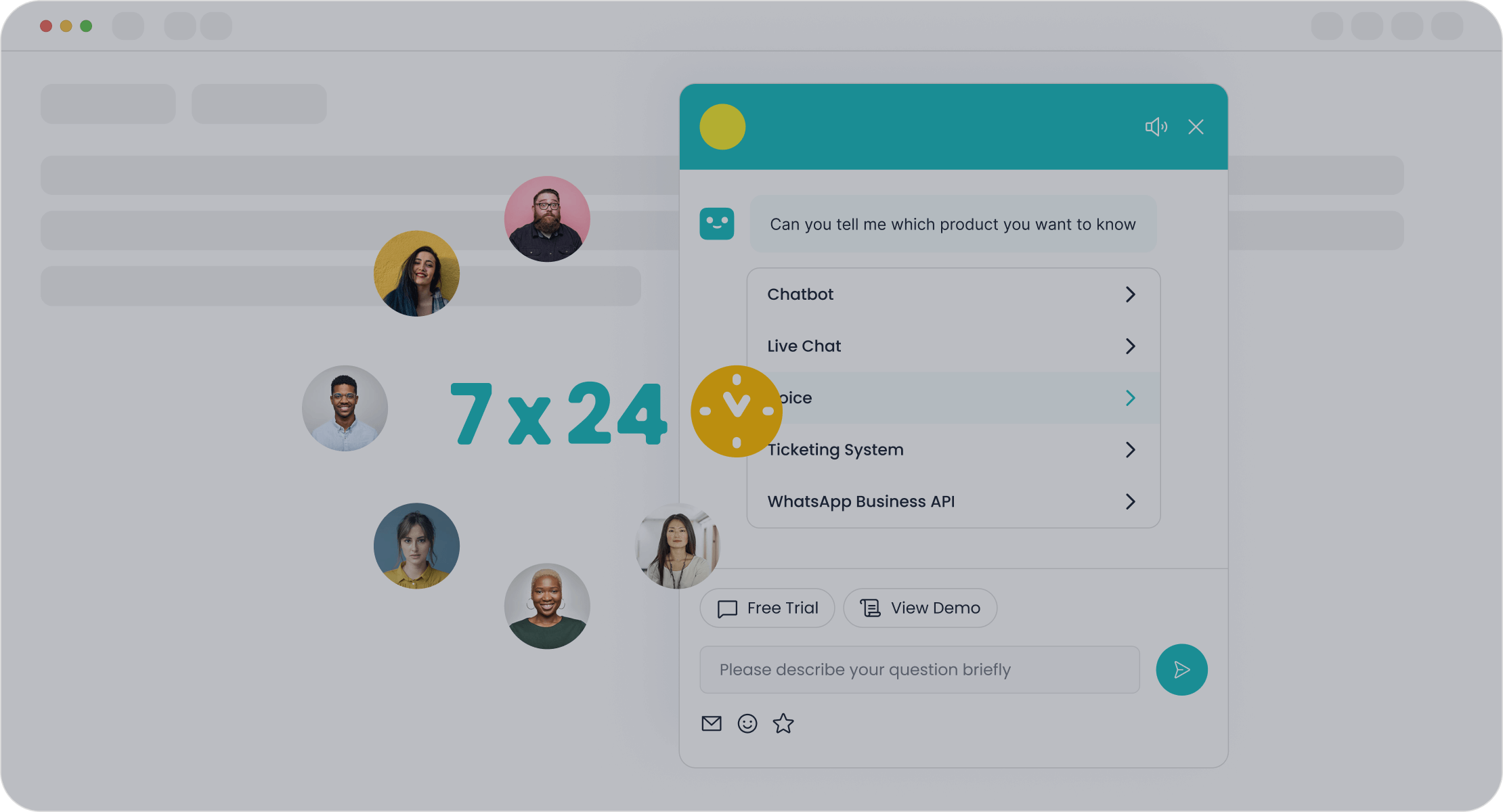Essential Steps for Use of Chatbots in Healthcare in 2025

You see more AI and chatbots in healthcare settings every year. In 2025, the use of chatbots in healthcare will help doctors answer patient questions faster and keep clinics running smoothly. AI now supports over 70% of routine healthcare tasks, as shown in recent industry reports (source). Chatbots can give patients answers at any time and help staff save time. The use of chatbots in healthcare settings also improves patient safety. Sobot AI brings you advanced AI-powered chatbots that work 24/7 and support many languages. With Sobot, you can trust the technology to make healthcare smarter.
Objectives for Use of Chatbots in Healthcare
Identifying Key Needs
You need to know why you want to use chatbots in healthcare. Start by looking at the main problems your clinic or hospital faces. Many healthcare providers want to answer patient questions faster, reduce wait times, and help staff focus on important tasks. For example, a clinic may get hundreds of appointment requests each day. Chatbots can help by answering simple questions and booking appointments. This saves time for both patients and staff.
Tip: Ask your team what tasks take up most of their time. You may find that the use of chatbots in healthcare can solve these problems quickly.
Some healthcare organizations also use chatbots to remind patients about medicine or check-ups. This helps patients stay healthy and follow their care plans. Sobot’s AI chatbot can handle these tasks 24/7 and in many languages, making it easier for everyone to get help when they need it.
Setting Measurable Goals
You should set clear goals before starting the use of chatbots in healthcare. Good goals help you see if the chatbot works well. Here are some examples:
- Reduce patient wait times by 30%
- Answer 80% of common questions without human help
- Improve patient satisfaction scores by 15%
- Lower staff workload by 25%
Make sure you track these goals with real numbers. Use reports and feedback from patients and staff. Sobot’s chatbot gives you detailed reports, so you can see how well it works in your healthcare setting. When you set and measure goals, you make sure the use of chatbots in healthcare brings real value to your clinic or hospital.
Compliance in Healthcare Settings
Data Privacy Standards
You must protect patient information when you use chatbots in healthcare. Data privacy is a top concern in all healthcare settings. In 2023, healthcare saw 640 data breaches with over 500 records each, and one major hack affected 11 million patients (source). These numbers show why you need strong data privacy standards.
Good data privacy practices keep patient trust and help you avoid costly mistakes.
To keep data safe in healthcare, you should:
- Use secure transmission protocols like HTTPS and TLS.
- Encrypt all stored data.
- Limit the collection and storage of personal health information.
- Apply anonymization methods such as data masking and tokenization.
- Require multifactor authentication for users.
Sobot’s AI chatbot supports these data privacy needs. It uses secure channels and strong encryption to protect sensitive information in healthcare settings. You can also set up user verification and control access to patient data.
Regulatory Requirements
Healthcare follows strict rules to protect patient data. You must follow laws like HIPAA in the United States and GDPR in Europe. These rules tell you how to handle, store, and share patient information. If you do not follow these rules, you risk heavy fines and damage to your reputation.
- HIPAA requires you to keep patient health information private and secure.
- GDPR gives patients more control over their data and requires clear consent.
- You must sign business associate agreements with any third-party service that handles patient data.
The average cost of a healthcare cyberattack is $10.1 million per incident. This shows why you must take compliance seriously. Sobot helps you meet these regulatory requirements by offering secure, compliant chatbot solutions for healthcare. You can trust Sobot to support your compliance journey and keep your healthcare data safe.
Choosing AI Chatbots for Healthcare
Sobot Chatbot Features

When you look for ai chatbots for healthcare, you want tools that make your work easier. Sobot ai chatbots give you 24/7 availability, so patients always get help. You do not need to worry about language barriers. Sobot chatbots support many languages, making it simple for people from different backgrounds to get answers. You can set up these ai chatbots with a no-code interface. This means you do not need to hire developers or spend weeks on setup. You just click and build the workflow you want.
Sobot ai chatbots use smart ai to answer questions, book appointments, and remind patients about medicine. You can trust these chatbots to handle routine tasks. This lets your staff focus on more important work. Sobot ai chatbots also help you save money. They cut costs by up to 50% because they handle many queries without extra staff. You can see how well your ai chatbots work with easy-to-read reports. These features make Sobot ai chatbots a strong choice for healthcare.
Sobot’s ai chatbots helped Agilent increase customer service efficiency by six times and cut costs by 25%. You can read more about this success here.
Integration Capabilities
You need ai chatbots that fit into your current systems. Sobot ai chatbots offer strong integration capabilities. You can connect these chatbots to your electronic health records (EHR), websites, and social media. This makes it easy for you to manage all patient chats in one place. Sobot ai chatbots support omnichannel integration, so you can talk to patients on WhatsApp, SMS, or your website.
You do not need to switch between different tools. Sobot ai chatbots bring all messages together. This saves time and reduces mistakes. The ai in these chatbots learns from your data and gives better answers over time. You can automate tasks like appointment reminders or follow-ups. With 24/7 availability, your patients always get support, even at night or on weekends.
Tip: Choose ai chatbots that can grow with your needs. Sobot ai chatbots are scalable and easy to update as your clinic grows.
Patient-Centric Design

User Experience
You want every patient to feel comfortable when using a healthcare chatbot. A good user experience leads to higher patient satisfaction. Studies show that 80% of patients prefer digital tools that are easy to use and quick to respond (source). When you design a chatbot for patient care, focus on clear language and simple steps. Patients should find answers fast, without confusion.
Sobot’s AI chatbot helps you improve patient satisfaction by guiding each patient through their questions step by step. You can customize the chatbot to match your clinic’s style and needs. This makes patient care more personal. Patients can book appointments, get reminders, and ask about their health at any time. When you make things easy, you see better patient satisfaction and more trust in your services.
Tip: Ask patients for feedback after they use the chatbot. Their ideas help you make patient care even better.
Accessibility
You must make sure every patient can use your chatbot, no matter their age or ability. Accessibility is key to patient satisfaction and better patient care. Over 15% of the world’s population lives with some form of disability (source). Your chatbot should support screen readers, offer large text, and work on all devices.
Sobot’s chatbot supports multiple languages and works on phones, tablets, and computers. This helps you reach more patients and improve patient satisfaction. You can set up reminders for medicine or check-ups, making patient care easier for everyone. When you remove barriers, you help every patient get the care they need. This leads to higher patient satisfaction and better health outcomes.
Note: Always test your chatbot with real patients to make sure it meets their needs and supports patient care.
Integration with Healthcare Workflows
EHR and System Sync
You need your chatbot to work well with your electronic health records (EHR) and other systems in healthcare. When your chatbot connects to EHR, you can update patient records, check medical histories, and manage appointment scheduling without extra steps. This saves time and reduces mistakes. In healthcare, even small errors can affect patient safety. A study found that 70% of healthcare providers want better EHR integration to improve care (source).
Sobot’s AI chatbot connects with EHR systems and other healthcare tools. You can sync patient data, manage appointment scheduling, and send reminders. This helps you keep all information in one place. Patients get faster answers, and your staff spends less time on manual data entry. You improve both efficiency and patient care.
Tip: Always test your EHR sync before going live. This helps you catch any issues early and keeps your healthcare data safe.
Workflow Automation
You can use chatbots to automate many tasks in healthcare. Workflow automation lets you handle appointment scheduling, prescription refills, and follow-up reminders without manual work. This means your team can focus on patient care instead of paperwork. In healthcare, automation can cut admin time by up to 30% (source).
Sobot’s chatbot helps you automate appointment scheduling, patient check-ins, and even billing questions. You set up rules with a simple interface—no coding needed. Patients can book appointments, get reminders, and ask questions any time. Your healthcare team sees fewer missed appointments and less stress.
- Automate appointment scheduling and reminders
- Send follow-up messages after visits
- Answer common healthcare questions instantly
Note: Automation in healthcare boosts efficiency and helps you deliver better service every day.
Training and Testing AI Chatbots

Data-Driven Training
You want your ai chatbots to give the best answers every time. Data-driven training helps you reach this goal. You start by collecting real questions from patients and staff. Use this data to teach your ai chatbots how to reply in a helpful way. The more real data you use, the smarter your ai chatbots become. For example, Sobot lets you upload articles, PDFs, and even text files to build a strong knowledge base for your chatbots. This makes your ai chatbots ready to answer medical questions, book appointments, and remind patients about medicine.
Tip: Review chatbot conversations often. Look for mistakes or gaps in answers. Update your ai chatbots with new data to keep them accurate.
A study from Stanford Medicine shows that ai chatbots trained with real patient data can answer up to 85% of routine questions correctly. You can use feedback from patients to improve your chatbots even more. This process helps your ai chatbots learn and grow over time.
Pilot Programs
Before you use ai chatbots across your whole clinic, you should run a pilot program. Start with one department or a small group of patients. This lets you test your ai chatbots in real healthcare situations. You can see how well your chatbots answer questions and handle tasks. Sobot makes it easy to set up pilot programs with its no-code interface. You can track how many questions your ai chatbots answer and how fast they respond.
- Collect feedback from staff and patients.
- Measure how many tasks your ai chatbots complete.
- Check if your ai chatbots improve patient satisfaction.
Note: Use the results from your pilot to make changes. Fix any problems before you launch your ai chatbots for everyone.
Pilot programs help you find what works best. You can adjust your ai chatbots to fit your clinic’s needs. This step makes sure your chatbots are ready for full use in healthcare.
Staff and Patient Education
Onboarding Teams
You need to prepare your team before using a chatbot in healthcare. Good onboarding helps your staff feel confident and ready to help every patient. Research shows that using a notification bar to highlight key actions can raise chatbot integration rates from 40-45% up to 55-60%. Onboarding checklists guide your team through important features, which increases adoption rates from 28% to 41%. Interactive walkthroughs help your staff learn how to customize the chat widget. This leads to 86% of users completing their setup goals and a 3% increase in feature usage. These steps also help your clinic see a 2-3% growth in monthly revenue.
| Onboarding Strategy | Description | Measurable Impact / Outcome |
|---|---|---|
| Notification Bar | Encourages key onboarding actions | Integration rate up to 55-60% |
| Onboarding Checklists | Guides through 5-7 key features | Feature adoption up to 41% |
| Interactive Walkthroughs | Helps with feature discovery and customization | 86% completion; 3% increase in feature usage |
| Revenue Impact | More feature adoption leads to revenue growth | 2-3% increase in monthly recurring revenue |
Sobot provides easy onboarding with step-by-step guides and a no-code setup. Your team can start using the chatbot quickly and help each patient right away. Training sessions and regular updates keep your staff ready for new features.
Tip: Hold short training sessions and use checklists to make sure every team member understands how to support each patient with the chatbot.
Patient Guidance
You want every patient to feel comfortable using your chatbot. Clear instructions help each patient know what to expect. Start by showing patients how to use the chatbot for booking appointments, asking questions, or getting reminders. Use simple language and visuals. Many patients may not be familiar with digital tools, so offer support in multiple languages.
Sobot’s chatbot works on phones, tablets, and computers, making it easy for every patient to access care. You can send welcome messages and short guides to help each patient get started. Remind patients that the chatbot is available 24/7 for questions about medicine, appointments, or follow-ups. Encourage feedback from each patient to improve the chatbot experience.
Note: Always ask for feedback after a patient uses the chatbot. This helps you find ways to make the experience better for every patient.
Monitoring and Optimization
Performance Metrics
You need to track how well your ai chatbots work in healthcare. Good monitoring helps you see if your chatbots help each patient and improve your clinic. Many clinics use key metrics to measure the success of ai chatbots. These metrics show how chatbots handle patient questions, save time, and boost satisfaction.
Here is a table of important metrics you should watch:
| Metric Category | Key Metrics | Description |
|---|---|---|
| Customer Care Specific Metrics | Decrease of first-level call rate | Fewer calls to agents because chatbots answer first |
| Escalation rate | How often chatbots send issues to human agents | |
| Email reduction rate | Fewer emails due to chatbot help | |
| User Experience Metrics | Self-service rate | Patients who solve issues with chatbots alone |
| Satisfaction rate | Patient ratings of chatbot answers | |
| Goal completion rate | Patients finishing tasks like booking or forms | |
| Non-response rate | Times chatbots do not answer properly | |
| Average number of interactions | How many times a patient talks to the chatbot |
You can use these metrics to see if your ai chatbots answer questions quickly, help each patient, and lower the workload for your staff. Sobot’s ai chatbots give you clear reports on these numbers, so you always know how your chatbots perform.
Tip: Check these metrics every week. Quick checks help you spot problems early and keep your ai chatbots working well for every patient.
Continuous Improvement
You should always look for ways to make your ai chatbots better. Start by reviewing feedback from each patient and your staff. Use this feedback to update your ai chatbots and fix any weak spots. When you see a high escalation rate, you can train your ai chatbots with new answers. If the satisfaction rate drops, ask patients what they want to see improved.
Sobot makes it easy to update your chatbots with new information. You can add new questions, change workflows, and test updates without coding. This helps your ai chatbots learn and grow with your clinic. Regular updates keep your chatbots smart and helpful for every patient.
Note: Continuous improvement means your ai chatbots will always meet the needs of your clinic and each patient. Stay active with updates and reviews to get the best results.
You can transform healthcare by following key steps for safe, efficient, and compliant chatbot deployment. Studies show chatbots reach over 90% patient engagement and boost adherence rates up to 97%. With ai, you gain 24/7 support, real-time data, and a judgment-free space for patients. Sobot’s ai chatbots help you automate tasks, protect privacy, and improve care. Providers report up to 40% efficiency gains and $3.6 billion in global cost savings (source). Choose Sobot to lead your clinic into the future with trusted ai solutions.
- Chatbots support appointment scheduling, symptom checks, and medication reminders.
- Ai ensures privacy, data security, and clinical oversight for every patient.
Embrace innovation. Let Sobot’s ai chatbots help you deliver better healthcare for everyone.
FAQ
What are the main benefits of the use of chatbots in healthcare?
You get faster answers, lower wait times, and 24/7 support. Chatbots help clinics save up to 50% on staff costs. Sobot’s AI chatbots also boost patient satisfaction and make healthcare more efficient. Learn more.
How does the use of chatbots in healthcare protect patient data?
You keep patient data safe by using chatbots that follow strict privacy rules. Sobot’s AI chatbots use encryption and secure channels. This protects sensitive health information and helps you meet HIPAA and GDPR standards.
Can the use of chatbots in healthcare improve patient engagement?
Yes! Chatbots remind patients about appointments and medicine. Studies show chatbots can raise patient engagement rates to over 90% (source). Sobot’s chatbots send reminders and answer questions, helping you keep patients involved in their care.
How do you start the use of chatbots in healthcare with Sobot?
You set up Sobot’s AI chatbot with a no-code interface. You can connect it to your website, EHR, or social media. Sobot offers step-by-step guides and support, so you launch quickly and help patients right away.
What tasks can the use of chatbots in healthcare automate?
You can automate:
- Appointment scheduling
- Prescription reminders
- Patient check-ins
- Answering common questions
Sobot’s AI chatbots handle these tasks 24/7, letting your staff focus on patient care.
